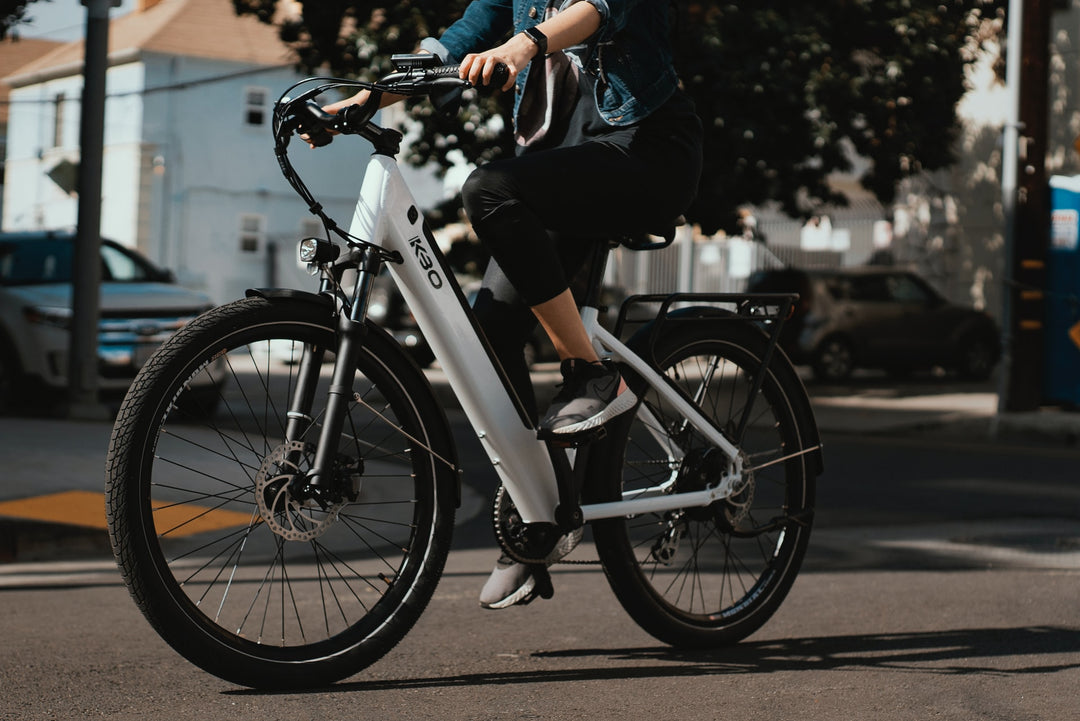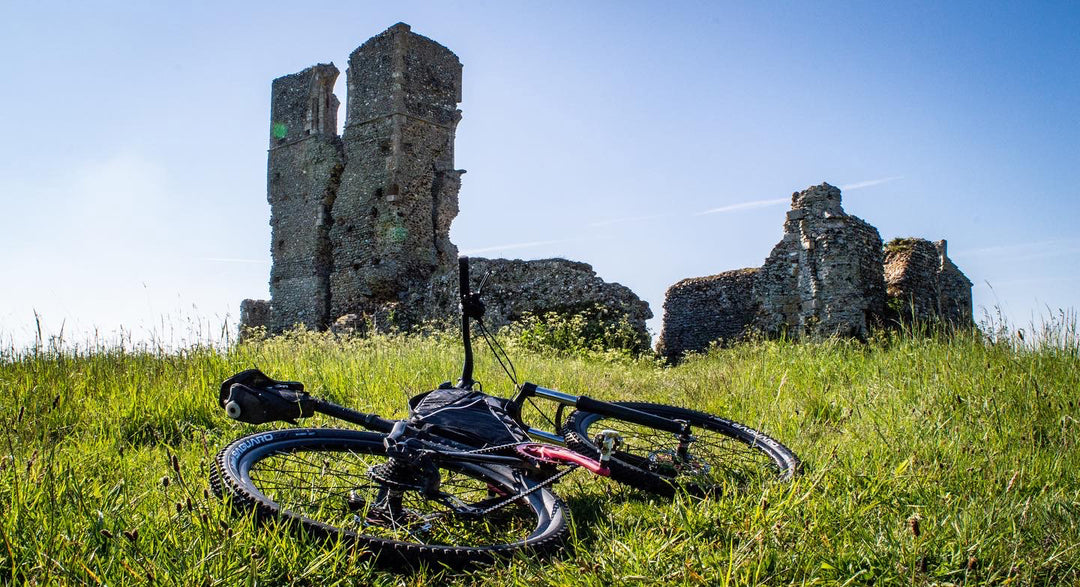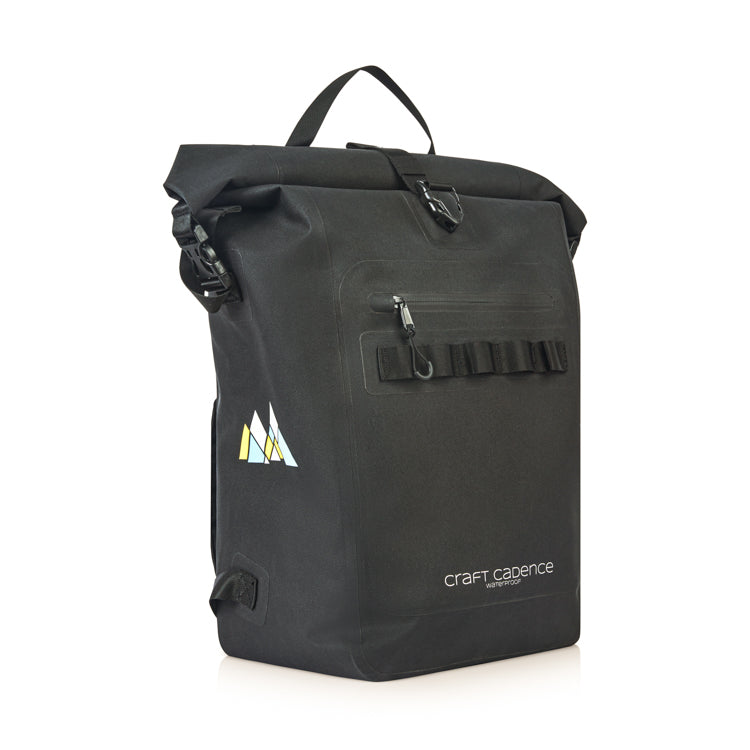The definitive guide to cycling in London in 2021
Craft Cadence is a UK based cycling bags and pollution masks brand that helps commuters stay organised and breath clean air. This is part of our cycle commuter's guide to London series.
Since the start of the COVID-19 pandemic, cycling has seen a boom across the UK. And in London, that’s no different. Where there was once gridlocked, there were thousands of runners and cyclists instead during the lockdowns.
So, whether you are thinking you want to commute to work by bike, or simply cycle around to explore the capital, this is where you can get started.
London cycling is ever evolving
Cycling in London has been an evolving situation over the last ten years. The infrastructure has changed, attitudes towards active methods of travel have changed, and bikes have changed.
You still hear the odd story about how unsafe cycling in London is, and there is obviously a risk every time you get on the bike, but in reality, London is actually very safe for cycling.

With the amount of traffic on the roads, it simply requires the cyclist to be more vigilant on the roads.
Benefits of cycling in London
But with the pandemic and the appeal to travel in hot, sweaty tubes, or walking through over-crowded streets fading, cycling is a superb option to get about the city faster, cheaper, and healthier.

The associated health benefits, for both physical and mental health, make cycling a great option to improve overall wellbeing, health and address environmental challenges.
Plus, London is relatively flat, so it caters for all abilities, especially with specific Cycleways zig-zagging across the city - there will be 450km of new Cycleways by 2024.
With that in mind, here’s everything you need to know about cycling in London in 2021.
The rules of the road for cycling in London
To start, it’s important to point out that regardless of any rules, always be vigilant on the bike and don’t take unnecessary risks.
It’s not uncommon to see cyclists doing things like undertaking buses or running red lights on the roads. Don’t be one of them. However, there are some rules that apply to help get you safely from A to B.
- Wear a helmet: It’s better to be safe than sorry, so protect yourself the best you can by wearing a helmet at all times. Don’t chance it. It’s not worth it.
- Use cycling lanes, not the pavement: Unless the pavement is marked for use by cyclists, don’t be tempted to cycle on them. An accident involving a pedestrian would be your fault if you are on the pavement.
- Wear visible clothing and invest in good lights: You want to be as visible as possible, especially at night. Don’t wear dark clothing at night. Opt for bright clothing, with reflective strips, and a front and back light. Using lights in the dark is a legal requirement.
- Know your signals: It’s important to obey the rules of the road and cycle properly. If you are turned left, signal left. Signalling isn’t just for cars. It lets other road users know what you are doing. Use clear hand signals.
- Cycle calmly and don’t do anything erratic: Some cyclists panic under pressure or realise they’ve taken a wrong turn and then swerve erratically or do something unexpected. Those actions can take other road users by surprise and cause accidents. Don’t do unexpected things, keep your eyes on the road at all times, resist road rage if a car cuts across you, and be careful when pulling out of junctions.
- Know where you are going: Cyclists who get lost often make mistakes. If you plan beforehand, you’ll be less hesitant and you won’t need to check directions or, worse, divert your attention away from the road. Of course, it’s hard to memorise directions but a phone mount with Google Maps on it can save the day here.
- Obey the rules of the road like any other vehicle: It’s been touched on above, but if it’s a one-way road, don’t cycle down it. If it’s a red light, don’t cycle through it. If it’s a pedestrian crossing, don’t think it doesn’t apply to you. The usual rules apply. And following them keeps you safe.
Using your bike on public transport in London
There will be times when you may want to jump on a bus, train or tube with your bike, so it’s important to know what restrictions are in place. Foldable bikes have become increasingly popular for city-cyclists, and in London, you’ll see loads of handheld foldable bikes being cycled around. The main reason is you can take a foldable bike on any public transport, like a Brompton below.

Tfl outlines the full rules for all public transport here, but here are the main bits:
- Folded bikes can be taken anywhere, at any time, on all public transport services. A bus driver can turn you away if the bus is too busy.
- Non-folded bikes can only be taken on some services. Generally, they are not allowed on tubes or overground trains during peak hours midweek - rush hour. But they are allowed anytime on weekends and bank holidays.
- Non-folded bikes are not allowed on buses or trams.
The impact of lockdown on London cycling
“This should be a new golden age for cycling,” said, Prime Minister Boris Johnson in May 2020 as he announced the plans to invest £2 billion towards new cycling and walking initiatives.
The aim is to promote alternative, active ways to travel, which could relieve the pressure on public transport. London cycling improvements since the start of the pandemic have seen pop-up bike lanes with protected cycling space, wider pavements, cycle-only corridors and safer road junctions.
These improvements come following a huge increase in cycling during the pandemic.

Streetspace for London has also been a project that has positively impacted cycling in London and made cycling easier and safer during the lockdown. The idea is to create more space for people to safely walk and cycle. The work includes:
- Making it easier and safer for people to keep up social distancing
- Encouraging people to walk, cycle or scoot more often, or take it up for the first time
- Preventing an increase in car use and enabling deliveries, emergency services and essential vehicle journeys from becoming gridlocked
- Keeping London's air as clean as possible to protect everyone's health and tackle the climate emergency

Since Covid hit the UK, there have unquestionably been more cyclists on the roads. And with the influx of new cyclists, there has been a lot of infrastructure changes with cycle lanes popping up all over the city.
However, since shops aren’t always open due to lockdown rules, make sure you are prepared for all scenarios. Think about having puncture repair kits, and knowing how to change inner tubes, always carry a pump, and have a plan in place for mechanical issues.
From a legal point of view, given the constantly evolving Covid situation, make sure you know the rules when cycling. That means finding out what ‘Tier’ London is in, if any. How many people you are allowed to cycle with, if any. Whether or not you need to keep social distancing. Whether you need a face mask. And so on.

The best places to cycle in London
London has some serious cycling hotspots to enjoy. Komoot’s ‘Cycling Around London’ page describes it perfectly:
“Canals, reservoirs and 3,000 parks all make cycling in London an absolute joy. As the famous River Thames cuts through the centre, it’s easy to enjoy flat bike rides throughout the city. Gentle hills can also be found here though, offering rare chances for views across the capital.
It might be the most populated city in the country but you’ll find plenty of cycle routes throughout London and its leafy suburbs. From Richmond Park to Hampstead Heath, it’s easy to get out for a spin and find yourself in surprisingly wild nature.
If you’re based in London, you have innumerable opportunities to cycle out into the verdant surroundings. Epping Forest is a fantastic example, an extraordinary ancient woodland just a stone’s throw from the city. With green spaces wherever you look, cycling in London is fast becoming a way of life”.

Here are a few of our favourite places to visit:
Richmond Park loop: If you’ve never cycled at Richmond Park, you haven’t experienced one of the best cycling spots in the capital. It’s packed full of cyclists every weekend, you’ll see deers and wildlife on the loop round, and it’s a challenging loop that suits most fitness levels. Dark Hill starts at the Kingston Gate car park and ascends for a third of a mile at an average gradient of 6%, with a second section that is short and punchy, reaching 12%.

Buckingham Palace and The Mall: Cycling down The Mall is a must for all London cyclists. In lockdown, thousands of cyclists enjoyed the traffic-free stretch in front of the iconic Buckingham Palace. Link this with a loop of Green Park and Hyde Park, which has a cycle path running around the perimeter.

Alexandra Palace Way: The climb up to Alexandra Palace from the south is around half a mile long and averages 5%. The road is very quiet, making it perfect for cycling training. Additionally, from here you can branch out to Hampstead Heath or Finsbury Park. The views of Alexandra Palace are worth it.

The Thames Path National Trail: This is a beginner-friendly, fairly short route. Cycling along the banks of the Thames is a must for sightseeing. It’s one of the nineteen designated national trails in the UK and runs from the source of the Thames in the Cotswolds to the Thames Barrier at Greenwich. Just be aware that some sections have public footpath status which means cyclists cannot use them. If you prefer walking, check out this great guide from the blogger Camino Adventures.

The Tower of London and Big Ben: These two are a must for sightseeing and incorporates the stretch of Thames from The Tower of London down to Big Ben. The route is a single cycle lane the whole way, and you’ll get to see a whole host of attractions: The Shard, the Tate Modern, Shakespeare’s Globe Theatre, the London Eye, and Somerset House. Cycling over the Tower of London is an event in itself, but finishing at Big Ben and the Palaces of Westminster is also a brilliant place to finish.

Battersea Park: Battersea Park is a great loop for all cycling abilities, where you can chill by the Thames, see the iconic Peace Pagoda, or quickly cross the bridge and cycle across to Westminster. The park loop is normally packed full of people so don’t expect to hit top speeds but it’s a beautiful London park that is well worth a visit.

If you want more routes, the London Cyclist blog recently made their London cycling ebook (which was previously £9.99) free to download and is packed full of rides for all abilities. More routes can also be found on the London Cycle Paths page as well as at Sustrans and London Cycling Campaign. Santander Cycle is also a good resource for shorter cycle rides around the city.
Conclusion
Cycling has been one of the saviours of the pandemic. Bikes are selling out everywhere. Prices are going through the roof. And plenty of people are doing exactly what the Government wanted: Ditching trains and tubes and opting for an active commute instead. There has also been a proliferation of the LBS (local bicycle shop), for which the folks at Bike Shops London have done great job at organising and summarising, making it easy for you to find your local London bike shop.
If you want to cycle in London, don’t be intimidated. Cycling in the capital can seem like a daunting prospect, and you do need to keep your wits about you, but that applies to cycling in any city in the world.
With the improvements to cycling infrastructure since the start of the pandemic and the abundance of fellow cyclists on the roads, you can take comfort in being able to cycle away from traffic and alongside other riders. Be prepared, have the right gear and protection, and use the dedicated cycling infrastructure wherever possible.
If you’ve started cycling in London, let us know what you think.



